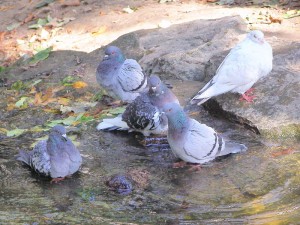TUESDAY, 29 JUNE 2010
The scientists tested a total of 118 pigeons, captured using gun-propelled nets during 2006-2007, from the public parks and gardens in Madrid, Spain. Blood and enema samples were analysed and screened for the presence of pathogens. DNA sequencing was carried out for positive samples. A high prevalence of Chlamydophila psittaci (52.6%) and Campylobacter jejuni (69.1%) was seen in the captured birds. The birds themselves did not have exhibit any of the symptoms associated with being infected with these pathogens. This suggests that feral pigeons act as asymptomatic reservoirs of Chlamydophila psittaci and Campylobacter jejuni.Although there have been few reports of disease transmission between pigeons and humans, it can occur by aerosols, direct contact or indirect contact through food and water contamination. Given the high density of pigeons in the public parks and gardens of most cities, it poses a direct threat to public health.
The results are published in the open access journal Acta Vetinaria Scandinavica [1].
Written by Nitika Somani

